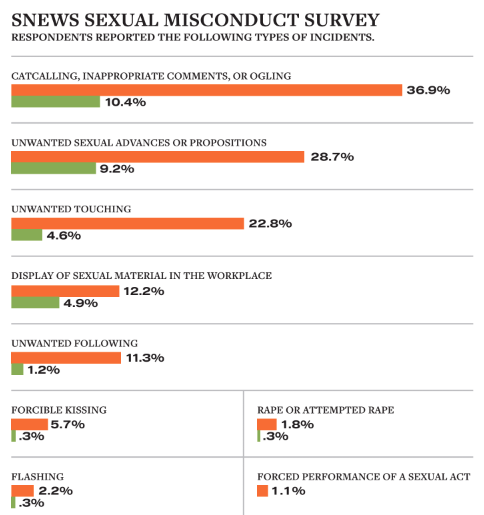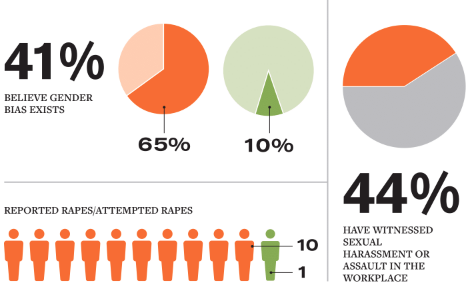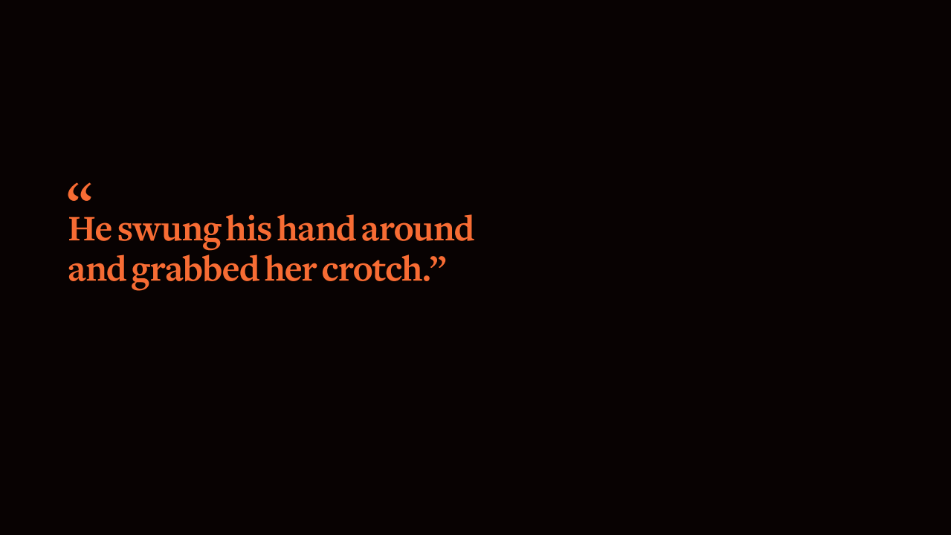Nora* was having one of those days. She was one of the few Westerners in her multinational company, and her factory trips to Asia often involved tough interactions with coworkers that made her feel isolated. After a frustrating 12-hour workday, she had dinner with the group and accepted an invitation from a colleague to return to his room to talk and vent.
A highly experienced consultant three decades her senior, this colleague had worked with Nora for two years, and she had come to consider him a mentor. He not only shared her Western background, but his grandfatherly and jovial demeanor made him easy to talk to. His room was often the impromptu gathering place for foreign visitors. It didnÔÇÖt seem unusual or unsafe to join him there.
For more than two hours, he listened as Nora shared her struggles with the company culture, giving thoughtful advice. Feeling better, Nora rose to return to her room, but instead of the customary double air-kiss, he moved in for a hug. It was odd, but not alarming to NoraÔÇÖs American sensibilitiesÔÇôuntil she felt his hand sliding toward her butt. She quickly stepped back, searched his face for an explanation, but found none. Suddenly, he swung his hand around and grabbed┬áher crotch. Shocked, Nora bolted from his room feeling confused, violated, and even more isolated.
According to ║┌┴¤│ď╣¤═° Business Journal‘s survey on sexual harassment and assault and workplace bias, NoraÔÇÖs experience is not uncommon.
ÔÇťThe outdoor industry prides itself on being above the fray…a family that cares for each other,ÔÇŁ said Jennifer*, another survey respondent. ÔÇťThat creates a culture that lowers your guard and allows predators to flourish.ÔÇŁ The worst part is that victims are often traumatized more than once: first, when they experience the assault or harassment itself, then again when they are made to feel fear, shame, or isolation when they speak out about it.
This was true for Anne*, who was met with silence after she confided in an outdoor community leader about her assault. It was true for Nora, who had to endure attempts by her perpetrator to publicly discredit her, and who continues to be shunned by his allies. It was also true for Jennifer, who lives in fear of her assailant but stays silent because ÔÇťour tight-knit community makes you afraid of the social and career consequences.ÔÇŁ
ItÔÇÖs time for the industryÔÇÖs reckoning.

Survey Approach
While stories of sexual misconduct circulate through whisper networks, the issue has still not become a priority for industry leaders.
So, to bring these stories into daylight, OBJ teamed up with #Safe║┌┴¤│ď╣¤═°, an industry-led initiative to combat sexual misconduct, to conduct a survey, which ran between September 13 and December 7, 2018. We had three main goals:
1. To determine the size and scope of sexual misconduct and gender discrimination in the industry.
2. To understand the nature of these experiences.
3. To collect data that can be analyzed together with previous #Safe║┌┴¤│ď╣¤═° work, which focused on the climbing community.
With this information, the industry can better inform, develop, and refine policies to reduce instances of sexual harassment, abuse, and gender discrimination, as well as expand public education while supporting victims. Combined, this work will keep all of us safer.

Results and Context
Of the 992* responses analyzed, 41 percent self-reported as having experienced sexual harassment or assault. Broken down by gender, 54 percent of the women and 19 percent of men reported having been victimized.
These numbers are in line with estimates of the overall scope of workplace sexual harassment reported by the Equal Employment Opportunity Commission in a 2016 study. Additionally, our findings are in full alignment with the data from the 2017 National Sexual Violence Research Center study, which shows one in two women and one in five men have experienced these behaviors in the workplace. Similarly, the prior #Safe║┌┴¤│ď╣¤═° survey found approximately one in two women and one in six men have experienced sexual harassment or assault while engaged in a climbing-related activity.
In this survey, the respondents were 61 percent female and 36 percent male, with the remaining 3 percent identifying either as non-binary or not providing a gender.
While some might be tempted to argue that the higher representation of women in this survey may skew the data to represent more victims, itÔÇÖs important to acknowledge that according to the Department of Justice, less than 25 percent of sexual misconduct cases are reported.
Where It Goes from Here
Like it or not, sexual harassment and assault is a problem everywhere, including in the outdoor industry. The evidence is clear.
And according to experts who study this type of behavior, sexual harassment and assault is most often about power and control, not sex, and the most egregious offenders rarely perpetrate just once. People who harass or assault often do so repeatedly, sometimes with dozens of victims. Furthermore, our unwillingness as a society to pursue justice, or to call out the perpetrators, even in confirmed cases, allows them to move on to other organizations and repeat or escalate their offenses. (In NoraÔÇÖs case, she reported her experience to her HR department, which opened a formal investigation. More women came forward with similar stories about the same man, and he was fired. But the reason for his departure was never communicated, and his name was never released as a perpetrator of sexual assault.)
Over the last year (through both the climbing and the OBJ survey), #Safe║┌┴¤│ď╣¤═° has verified nearly a dozen serial offenders, most of whom experienced no consequences, some of whom were asked to perform ÔÇťcorrective actionsÔÇŁ but otherwise stayed in their positions. In the rare case in which someone was asked to leave an organization, the details were carefully sealed to protect the offenderÔÇÖs reputation. In only a single case did the organization include the offenderÔÇÖs misconduct in his HR file, which will likely never see the light of day because itÔÇÖs not common practice for potential employers to request full HR files from previous employers.
It is our hope that by exposing the extent of this issue, the industry will listen, believe, and change. Sexual harassment and assault is a tough and complex issue mired with pitfalls and social discomfort, and itÔÇÖs easy to accept bad behavior as status quo. But as activist Brady Robinson, former executive director of Access Fund said, ÔÇťDoing nothing is not an option.ÔÇŁ
It is impossible to read and listen to these stories and not have a human response, and it is imperative that industry leaders stand up and lend their voices for change. Because if not us, then who? If we want to see a better future for ourselves, our children, and our industry, we canÔÇÖt sit back and do nothing.
3 Ways to Address Sexual Harassment and Assault Now
1. Establish a clear Code of Conduct for employees and anyone who interacts with employees: customers, vendors, volunteers, and board members.
2. Create a process for reporting and dealing with misconduct and be prepared to protect victims from retaliation.
3. Access a free toolkit with templates for Code of Conduct, Reporting Misconduct, Whistleblowing Policies, and educational materials: bit.ly/SHSAtoolkit


